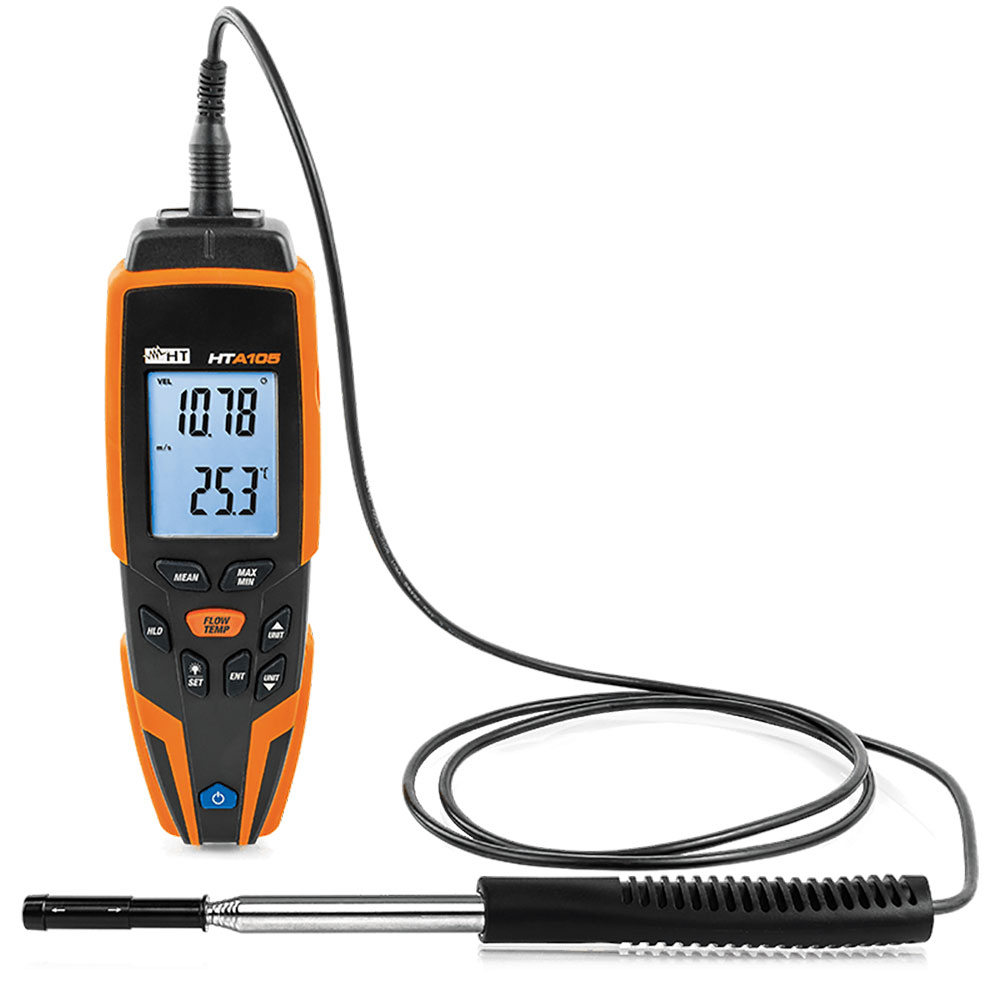Comparing Digital and Mechanical Anemometers: Which is Right for You?
Comparing Digital and Mechanical Anemometers: Which is Right for You?
Blog Article
Anemometers Revealed: Comprehending Their Relevance in Environmental Tracking and Precaution
The role of anemometers in environmental monitoring and safety measures is often underestimated, yet their significance is obvious. These tools have a lengthy history rooted in scientific inquiry and technical developments, advancing to become essential devices in numerous fields. From weather forecasting to aviation safety, anemometers play a crucial duty in supplying precise data that educates decision-making processes and enhances total security. Understanding the details of anemometers reveals a world of essential understandings that are fundamental to our understanding of the setting and the procedures we take to ensure safety and security.
Background of Anemometers
The evolution of anemometers can be mapped back to the old worlds where primary wind determining tools were first used. These very early wind measurement tools laid the structure for the development of much more innovative anemometers over time. One of the earliest well-known anemometers was the hemispherical cup anemometer created by Leon Battista Alberti in the 15th century. This layout consisted of four hemispherical cups that accumulated wind energy, offering a dimension of its strength based on the speed of rotation.
Over the years, advancements in innovation led to the growth of more modern-day anemometers, including ultrasonic anemometers and laser Doppler anemometers, using boosted accuracy and effectiveness in determining wind rate and instructions. The background of anemometers showcases an impressive trip of innovation and development in the area of weather forecasting.
Kinds Of Anemometers
Throughout the field of meteorology, numerous types of anemometers have actually been developed to accurately measure wind rate and direction. The most common kind is the mug anemometer, which consists of 3 or 4 mugs installed on horizontal arms that revolve with the wind. As the mugs spin, the speed at which they rotate is straight proportional to the wind speed. Another commonly utilized type is the vane anemometer, which features a tail or fin that aligns itself with the wind direction. This positioning permits the device to determine the wind instructions. Sonic anemometers make use of ultrasonic signals to determine wind speed and instructions precisely. They are typically used in study applications as a result of their high accuracy. Hot-wire anemometers run based upon the concept that the cooling effect of wind on a heated wire is symmetrical to the wind rate. These anemometers are ideal for measuring reduced wind rates with high precision. Each type of anemometer has its staminas and is selected based upon the specific needs of the monitoring job available.
Applications in Meteorology
Having gone over the numerous sorts of anemometers made use of in meteorology for measuring wind speed and direction, it is necessary to discover their sensible applications in the area. Anemometers play a crucial role in meteorology by providing real-time and accurate data on wind conditions (anemometer). Meteorologists use anemometers to monitor wind speed and instructions to anticipate climate patterns, concern cautions for serious weather occasions like tornadoes, hurricanes, and tornados, and examine atmospheric conditions for aeronautics safety and security
In weather forecasting, anemometers assist in understanding local and local wind patterns, which are vital for forecasting weather condition changes and identifying weather fads. These gadgets are also made use of in research study to study microclimates, city warm islands, and air pollution diffusion. Furthermore, anemometers are employed in farming to optimize plant administration practices, such as watering and pesticide application, based upon wind conditions.
Relevance in Air Travel Safety
An indispensable element of ensuring air travel safety hinges on the meticulous tracking of wind problems utilizing anemometers. Anemometers play an essential duty in aviation by giving real-time data on wind rate and instructions, aiding pilots in making notified choices during landing, trip, and liftoff. Strong and uncertain winds can dramatically impact airplane operations, making it essential for air travel authorities to rely upon accurate wind measurements to make sure the safety of passengers and team.

In the vibrant environment of air travel, where also minor modifications in wind rate and direction can have profound results, anemometers stand as essential devices for advertising secure and risk-free air traveling.
Role in Environmental Research Study
Anemometers play an important duty he has a good point in ecological study by giving crucial information on wind rate and instructions. By properly gauging wind features, anemometers aid scientists examine the motion of contaminants in the air, examine the effect of industrial emissions, and predict the spread of contaminants in the environment.


Conclusion
In conclusion, anemometers have played a crucial duty in ecological surveillance and security procedures. With a rich history and various kinds readily available, these gadgets have been widely made use of in weather forecasting, air travel safety, and ecological study. Comprehending the importance of anemometers is important for properly gauging wind speed and direction, which is essential for anticipating weather patterns, making certain secure air travel procedures, and carrying out environmental researches - anemometer. Their contributions to these areas can not be taken too lightly.
One of the earliest known anemometers was the hemispherical mug anemometer invented by Leon Battista Alberti in the 15th century. Over the years, improvements in technology led to the advancement of even more modern anemometers, including ultrasonic anemometers and laser Doppler anemometers, supplying enhanced accuracy and performance in measuring wind rate and instructions. Hot-wire anemometers operate based on the principle that the cooling result of wind on a heated cable is symmetrical to the wind rate. Meteorologists use anemometers to keep an eye on wind rate and direction to forecast weather condition patterns, concern warnings for severe weather condition occasions like tornadoes, cyclones, and tornados, and assess atmospheric conditions for air travel security.
Recognizing the value of anemometers is essential for accurately determining wind speed and direction, which try this is important for my latest blog post anticipating weather condition patterns, making sure secure aeronautics procedures, and performing ecological researches. (anemometer)
Report this page